I am working on an art installation and plan to use a number of these small circuits to make sounds, to sense sound/vibration and also to move the device (using a triangle wave output).
This link gives examples of input and output using the piezo. I have crudely mashed the circuits together into one. Would this work? Or do I need some more components, eg diode protection on the output.
The objective is to create a small circuit with the minimum of parts that can be experimented with as a cell in a kind of physical automaton.
